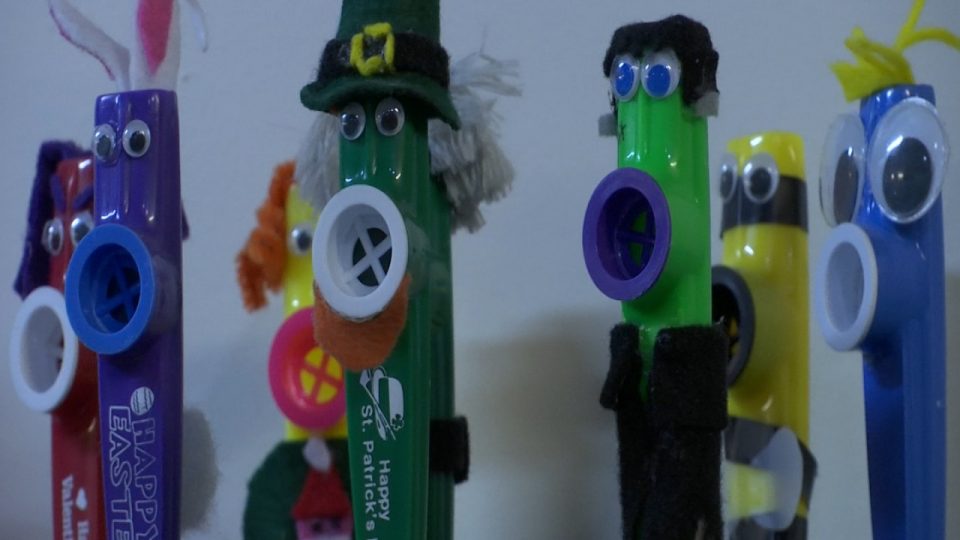BEAUFORT, S.C. (WSAV) — Tucked in the corner of a strip mall in Beaufort, South Carolina is America’s only plastic kazoo factory.
Kazoobie Kazoos produce nearly one million kazoos per year — and around 5,000 each day.
They started out 19 years ago in an airplane hangar on Hilton Head Island and have since expanded their business to Beaufort.
The instrument that we know today was invented in Georgia in 1840. In 1852, the kazoo made its debut in Macon at a state fair.
Kazoobie Kazoos is a factory, museum, and store, all in one. They give around 6,000 tours during the summer where visitors can discover over 100 different antique kazoos as well as watch the assembly, imprinting and packaging process.
“It’s a good family tour,” Kazoobie Kazoos Marketing Director Sarah Barnwell said. “I think adults sometimes like it more than kids.”
At the end of the tour, visitors get to build their very own kazoo and learn how to play in a symphony.
“They make their own kazoo and we make sure that everyone sings a song together, so I think it’s a good, fun learning experience,” Barnwell said.
They ship their kazoos globally to places like South Korea, Belgium and New Zealand with orders as large as 50,000 kazoos.
“And I also think there are not many of us who are musically talented and everyone is musically talented with a kazoo,” Barnwell said.
The history of the Kazoo:
The kazoo is categorized among the type of instruments known as the “mirlitons.” This group of instruments is characterized by having a vibrating membrane.
It is believed that the kazoo’s closest relative is the African version of a mirliton: the horn-mirliton. The building materials of the horn-million were of a more primitive nature. The tube was made out of the horn of a cow and the membrane consisted of the egg-shells of spiders.
The African horn-mirliton was used to distort voices at tribe gatherings. An analogy here is the use of the mask in the theatre.
The first mirlitons in Europe were the eunuk-flute or onion flute from the 17th and 18th centuries.
Through the 18th century, instruments of different construction but similar to the kazoo could be found in the major part of North America.
These instruments were based on the African mirliton and were used for folk music.
In the mid-1800s, the kazoo in its present form started making an impact on the history of the world.
A man by the name of Alabama Vest got the idea for the kazoo in the 1840s in Macon. He teamed up with the German clock manufacturer Thaddeus Von Glegg to construct the first kazoo.
Emil Sorg, who was a traveling salesman, came across a Vest and von Glegg’s kazoo on one of his business trips. He showed great interest in the kazoo and was eager to get the kazoo into mass-production.
With this thought in mind, Emil Sorg traveled to New York. Here he became partners with Michael McIntyre, who was an ironsmith. Together Sorg and McIntyre created the first production of the kazoo in the year 1912.
McIntyre had now gained enough knowledge to maintain the production of kazoos all by himself. All he needed was a larger factory. In 1913 he separated from Emil Sorg and teamed up with Harry Richardson who owned a big metal factory.
McIntyre and Richardson launched the first mass-production of the kazoo in 1914. Selling kazoos was a good business. The sales figures of the popular instrument rose enormously.
In 1916 McIntyre and Richardson renamed their partnership and turned it into a company called The Original American Kazoo Company.
As other manufacturers of kazoos tried to get in on the sales market the pressure of competition was rising. Therefore it was a feeling of satisfaction and pride when McIntyre succeeded to get his product patented in 1923.
The factory itself still exists today and it still produces kazoos. Next to the original factory, a museum has been built to tell the history of the kazoo and to give a detailed description of the manufacturing process.


